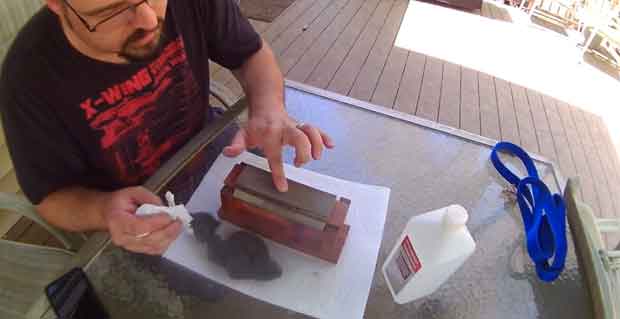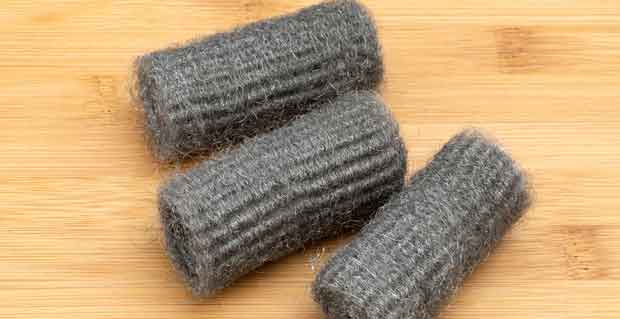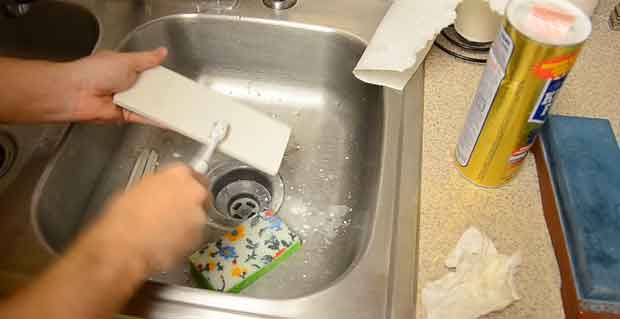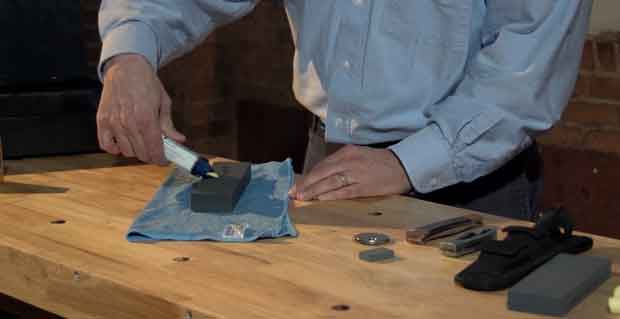Sharpening stones are an important part of any knife set, but they’re also one of the most neglected parts of the kit. A whet stone needs regular cleaning if you want it to last for years instead of months.
There are other ways of sharpening a dull knife such as diamond sharpening stone, oil stone, natural stone, ceramic stone, water stone preferably Japanese water stones, flattening plate, and so on.
However, using a whetstone is one of the most effective methods for cleaning knives.
How to Clean a Whetstone: Step By Step Guide

This article provides a step-by-step guide on how to clean a whetstone.
This will help prolong how long they last before needing replacement and can stave off some more serious problems such as rust or corrosion.
Using Soap and Warm Water
The initial step for you is to know how to clean a whetstone using soap and warm water. Scrub all surfaces thoroughly so that no food residue or blood remains on the surface.
Once you’ve done this, rinse off the soap and wipe down everything with a dry cloth. This removes anything that might have been left behind by the soap residue and any water droplets.
1. Drying the Whetstone Afterward
Once you’ve washed and wiped clean your sharpening stone, it’s time to dry it thoroughly before returning it to its original sheath for storage or back into service regularly.
To do this, carefully move the stone over a towel so that all the surface area is covered in cloth fibers and then allow these to absorb what little moisture remains from washing and rinsing off soap residue.
This will prevent rust or corrosion which can be caused by condensation if left unchecked during drying out periods between uses.
Once again, wipe down anything with a damp cloth after doing this just like how we did when cleaning them in step one.
2. Storing After Drying
Once the whetstone has been dried, it should be stored in a safe and dry location to avoid any rust or corrosion when they are not being used.
A sheath is often how you store them, but this can also only work if there’s enough room so that they don’t bump into anything else while moving around.
Cleaning a Whetstone: Other effective strategies
The following are some other effective ways that we will discuss
Apply WD-40 to Your Sharpening Stone
To apply WD-40 to your whetstone, first, you’ll need to find the right type of applicator. I recommend getting a spray bottle or pouring some onto a clean cloth. If desired, you can also use a cotton ball to apply the WD-40 on the whetstone.
It’s important that you wipe off any residual liquid left behind from the previous cleaning so that there is no contamination. Apply WD-40 to all surfaces of the whetstone in an even and steady manner for about 5 seconds per stone surface.
Use Fine Steel Wool to Remove Grime
Another way to clean a whetstone is using fine steel wool. Take this and scrub all surfaces of the surface, paying close attention to any areas that might be dirty such as around the edge where food residue can accumulate or near the handle.
Once you’ve done this, rinse off the soap and wipe down everything with a dry cloth. It removes any water droplets or soap residue that might be left behind after washing. This works mostly on old sharpening stones that don’t get used much.
Using Sandpaper
Sandpaper is another alternative. You can start with coarse grain and go down in grit size until you get the desired finish that you need for your knife or blade.
For example, if it’s not very dirty then just use 80-grit sandpaper which will remove any glazed surface without damaging the stone as much.
If the sharpening stone has been used frequently, then 120-grit should be enough to take off all residues before polishing up with 180-220 grade of sanding paper.
Once again, this method works better on old stones than newer ones and may have some minor issues such as cutting too deep into the surface of what was once a new stone.
Tooth Brushes
If you don’t have any honing oil or WD 40 to keep your whetstone in good condition, then using a small old toothbrush to clean them.
It doesn’t matter if it’s broken with hairs missing at the end because this helps you get rid of dirt and debris that might accumulate on those hard surfaces during use. It won’t be as effective as other methods but is an option for how to clean a whetstone without soap powder or water.
Using Scotch Brite Pads
How to use a scotch brite pad to clean your whetstone if you don’t want to use soap or water. Wet the scotch brite pad and then scrub all surfaces of the whetstone in an even manner.
Dry it off with a clean cloth then Dry excess water from around edges. Or if there are any other areas where they might have accumulated. So that there’s no risk for corrosion to take place during drying out periods between uses.
Using Honing Oil
You can also consider using honing oil.
This is used to help maintain the durability of a blade by applying it regularly and making sure that no debris or corrosion builds upon its edges.
You can find different honing oil in a store, but most people prefer using refined mineral oil which is recommended for use with whetstones.
To apply the honing oil to your sharpening stone, first, pour some onto a clean cloth or cotton ball and then gently rub it into all surfaces until they’re fully covered.
This ensures that no areas are missed while doing this so that you have enough time to apply how much is necessary for going overboard.
Be careful not to overdo, just be generous when applying and also during regular maintenance.
Additional Tips for storing sharpening stones
Always use both hands on opposite sides of the stone back. Since one hand alone will cause an uneven pressure distribution, which could lead to damage.
Use your fingers more than just your palms because the skin on your fingers will be gentler and less likely to scratch. As well as make sure you store them in a place where they won’t get knocked over accidentally.
Last Thoughts
When properly maintained, whetstones can provide a lifetime of sharpening services. For best results and for the longevity of your stone, please remember to follow these simple but important steps when cleaning it.






